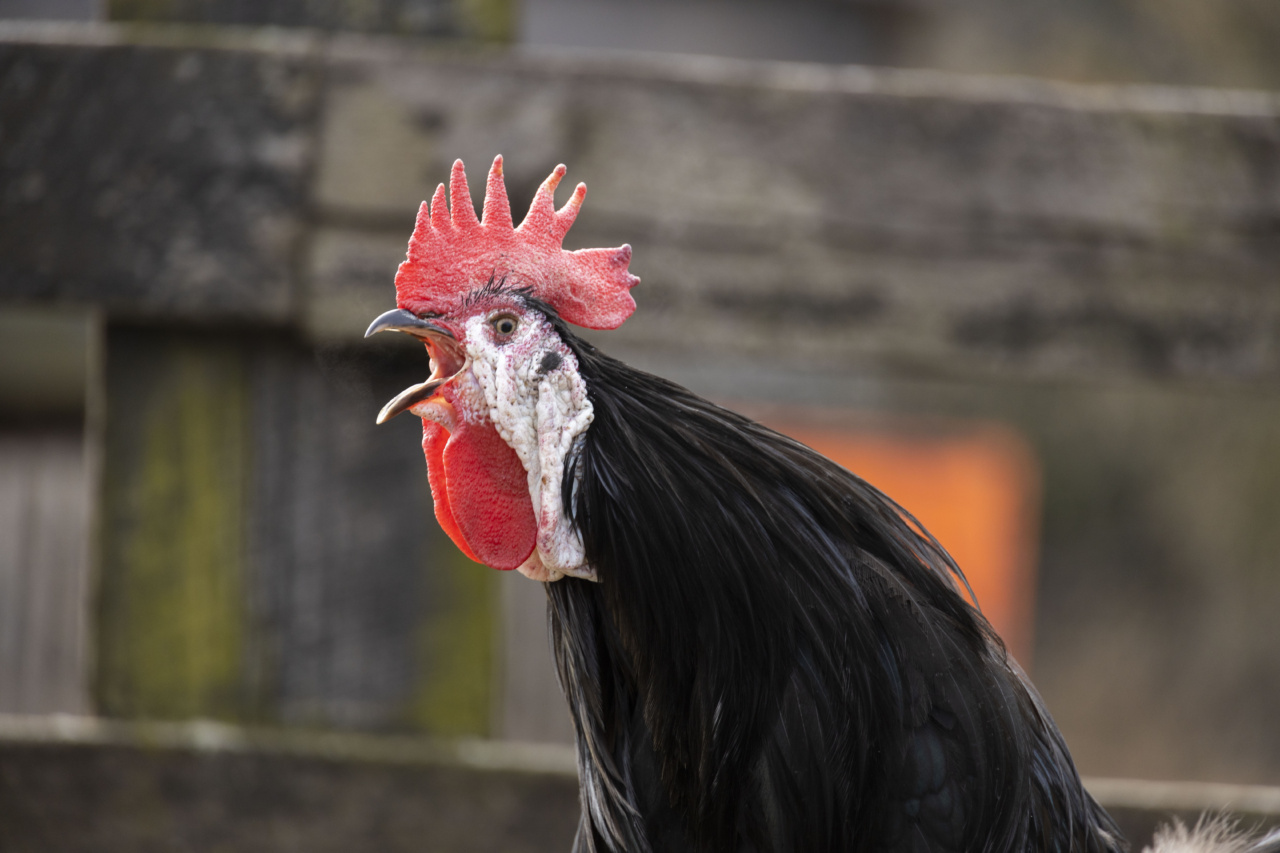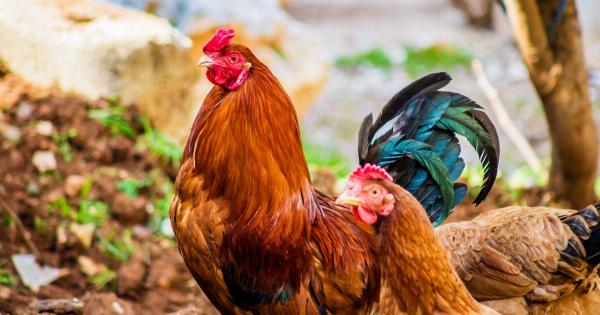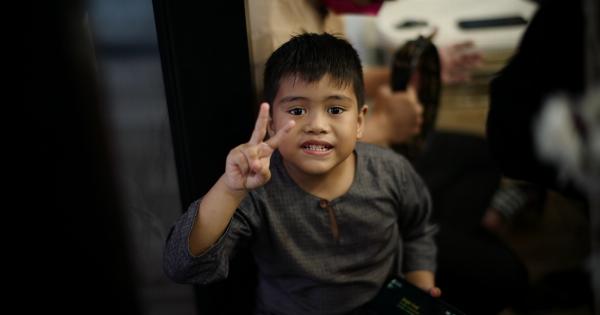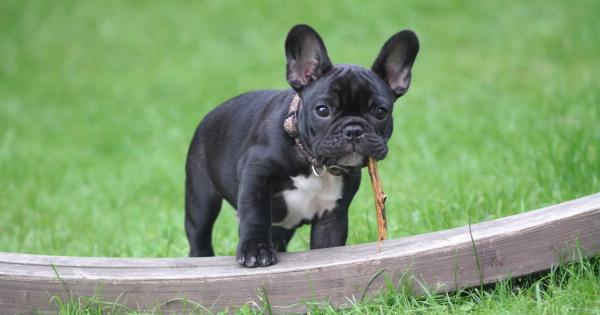Raising chickens can be a rewarding and educational experience for both children and adults alike. It teaches responsibility, provides a source of fresh eggs, and allows families to connect with nature.
However, sometimes unexpected surprises can occur, such as finding out that your child’s beloved chicken is not actually a hen, but a rooster! This discovery can leave you wondering what to do next and how it will impact your backyard flock. In this article, we will explore the signs that indicate your child’s chicken is a rooster and discuss the implications of having a rooster in your flock.
1. The Early Morning Wake-Up Call
One of the most unmistakable signs that your child’s chicken might be a rooster is if it starts crowing in the early morning.
While hens are generally quiet and only communicate through clucking, roosters belt out a characteristic crow that can be heard from a distance. If you find yourself being woken up by the sound of crowing, it’s highly likely that your child’s chicken is a rooster.
2. Comb and Wattle Development
The comb and wattles are the fleshy protuberances found on top of a chicken’s head and around its beak, respectively. Roosters typically have larger, redder, and more pronounced combs and wattles compared to hens.
If your child’s chicken’s comb and wattles are growing rapidly and becoming more prominent, it’s a strong indication that you have a rooster on your hands.
3. The Saddle Feathers
Another telltale sign of a rooster is the development of saddle feathers. Saddle feathers are long and pointed feathers that grow on a rooster’s lower back just above the tail feathers.
They serve no functional purpose in hens, so if you notice these feathers appearing on your child’s chicken, it’s a clear sign that it’s a rooster.
4. Aggressive Behavior
Roosters are known for their territorial and protective nature. As they mature, roosters can exhibit aggressive behavior towards both humans and other chickens. They may chase or even attack members of the flock, including your child or other pets.
If your child’s chicken displays aggressive behavior, it’s highly likely that it is a rooster.
5. Wing Flapping and Chest Puffing
Roosters have an innate instinct to display dominance. They often engage in wing flapping and chest puffing as a form of asserting themselves within the flock.
If your child’s chicken frequently flaps its wings and puffs out its chest, it’s a behavior commonly associated with roosters.
6. Crow-Like Vocalizations
While hens may occasionally make a noise that resembles a crow, it’s usually a distorted imitation and not nearly as loud or consistent as a rooster’s crow.
If your child’s chicken is producing vocalizations that are distinctly similar to that of a crow, it’s a strong indicator that you have a rooster on your hands.
7. Accelerated Growth Rate
Roosters tend to have a faster growth rate compared to hens. They often appear bigger, bulkier, and develop more quickly.
If your child’s chicken is growing at a rapid pace and seems to be outpacing the rest of the flock, it’s likely that you have a rooster.
8. Mating Behavior
One of the most obvious signs of a rooster is when it exhibits mating behavior. Roosters will attempt to mount and mate with hens by standing on their backs and flapping their wings.
If you witness your child’s chicken engaging in this behavior, it’s a clear indication that it is a rooster.
9. Distinct Feather Patterns
In some chicken breeds, particularly those with sex-linked feather patterns, the feathers of roosters can differ from those of hens. For example, some breeds may have different colors or patterns on their neck feathers or tail feathers.
If your child’s chicken displays distinct feather patterns that are typical of roosters, it’s another clue that you have a rooster in your flock.
10. The Expert Opinion
If you’re still unsure whether your child’s chicken is a rooster or a hen, seeking the expert opinion of a poultry veterinarian or an experienced chicken breeder can provide clarity.
They can examine the physical characteristics, behavior, and anatomical attributes of the chicken to determine its gender conclusively.
Implications of Having a Rooster in Your Flock
Discovering that your child’s chicken is a rooster may raise several questions and concerns about the dynamics within your backyard flock. Here are some implications and factors to consider:.
1. Noise Levels and Neighbors
Roosters are notorious for their early morning crowing, which can be disruptive to both your household and your neighbors.
Before deciding to keep a rooster, check your local ordinances and consult with your neighbors to ensure compliance and mutual understanding.
2. Potential Conflicts within the Flock
Adding a rooster to your existing flock of hens can potentially disrupt the hierarchy and dynamics already established. Roosters may exhibit territorial behavior towards other chickens, leading to conflicts and even injury.
Monitor the interactions closely and be prepared to intervene if necessary.
3. Fertilized Eggs and Breeding
With a rooster in your flock, the eggs laid by the hens will be fertilized. If you’re not interested in breeding chickens, you may need to consider alternative solutions for your surplus eggs.
Some people choose to sell fertile eggs, while others prefer to consume them. It’s important to note that fertilized eggs can still be consumed safely unless they have been incubated.
4. Enhanced Protection and Vigilance
Roosters have protective instincts and can provide an extra level of defense for your flock. They act as sentinels, alerting the hens to potential threats and predators.
Their presence may enhance the security of your flock, making them less vulnerable to attacks.
5. Educational Opportunities
Having a rooster in your flock can provide unique educational opportunities for your child. They can learn about the role of roosters in the breeding process, observe mating behavior, and gain insights into the natural behavior of chickens.
Conclusion
Discovering that your child’s chicken is a rooster can be a surprise, but it also presents an opportunity to learn and adapt.
Understanding the signs that indicate your chicken is a rooster and considering the implications of having a rooster in your flock will guide you in making informed decisions for the well-being of your backyard chickens and the harmony of your household.






























